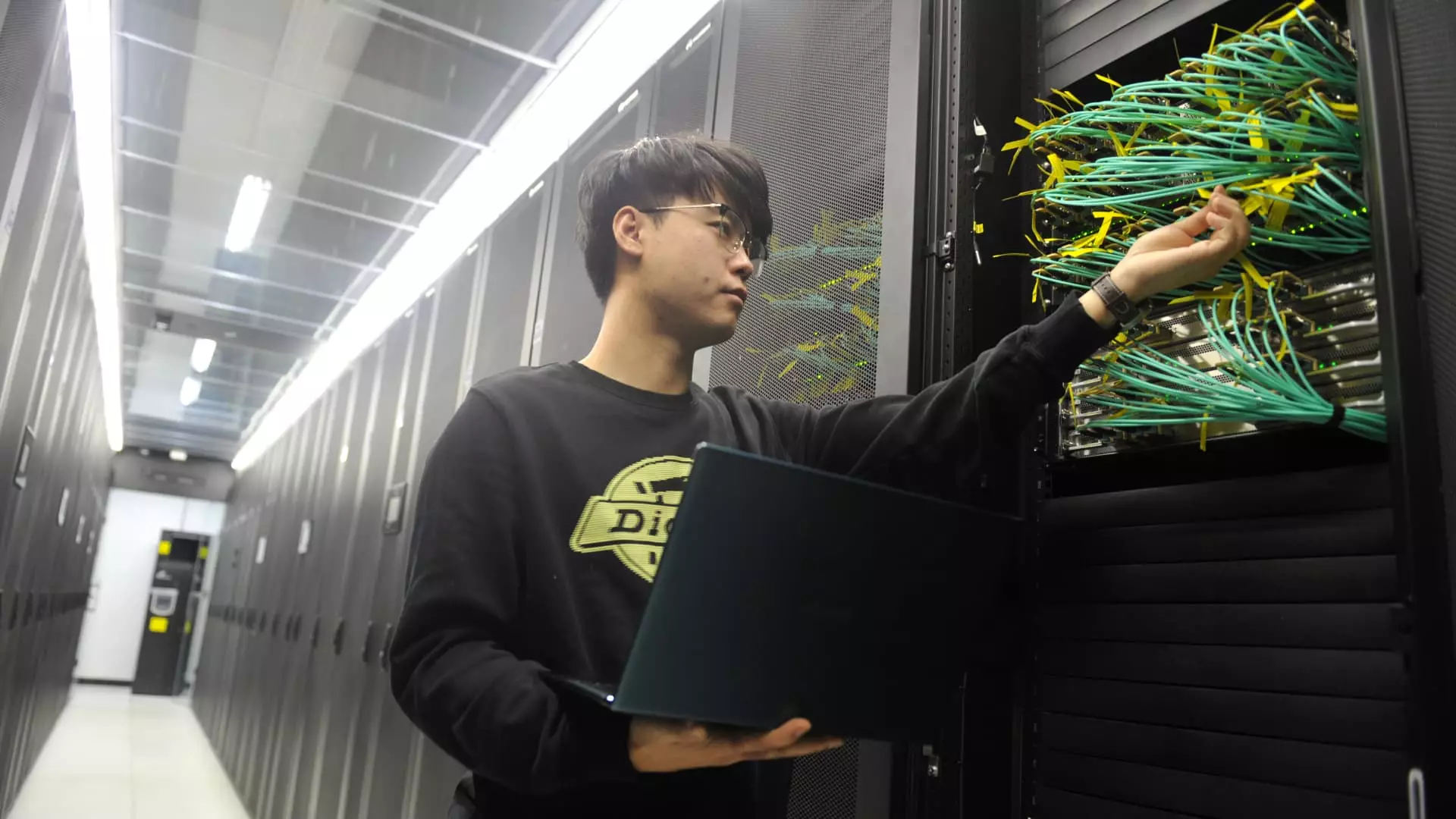5 Stunning Insights: How U.S.-China Trade Tensions Fuel AI Growth

As we stand at the precipice of an economic battleground between the United States and China, the dual forces of trade tensions and artificial intelligence (AI) development reveal a paradox: while tariffs escalate division, they simultaneously galvanize innovation. Trade wars might conjure images of thwarted economic progress, but for a handful of Chinese companies, they have become unlikely allies. The U.S.-China trade dispute, rather than hindering technological advancement, has led many Chinese firms to double down on generative artificial intelligence, leaving us to ponder whether adversity might indeed foster innovation.
Analysts have been quick to discern this trend, with significant investment in AI becoming essential for corporate competitiveness. The focus on DeepSeek, a pivotal AI technology, illustrates how Chinese companies are not merely enduring trade obstacles but are actively leveraging them for strategic growth. Bernstein’s recent findings assert that demand for AI technologies remains robust, propelled by advancements that render application development more cost-effective. With increasing reliance on homegrown technologies, businesses are positioning AI as vital for future growth—an insight that raises questions about the resilience of the Chinese economy amidst external pressures.
Catalysts for Change: The Role of Local Economies
Trade struggles often incite localized spending, a fact substantiated by historical context. Observations from earlier in the U.S.-China conflict under President Trump’s administration reveal that increased tensions led to a surge in Chinese investments in domestic technology firms. This pattern appears to be repeating itself, as numerous corporations preemptively prepare for prolonged economic friction. The Bernstein analysts propose that AI has now emerged as the cornerstone of China’s economic strategy, championed by local firms that embrace generative AI while navigating the treacherous waters of international tariffs.
Kingsoft Office, the operator of the word-processing app WPS, and Kingdee, specializing in enterprise software management, have underscored this trend. The former announced an AI-enhanced version of its application, achieving nearly 20 million active users in China—a staggering statistic. Such growth underscores a calculated response to external economic pressures, embodying a strategy to transform adversity into an advantage. In essence, the potential for a technology-driven economy emerges from the ashes of trade strife, suggesting that localization isn’t merely a defensive maneuver; it’s an offensive strategy for growth.
AI as a Strategic Asset in Economic Warfare
China’s ambitions to lead in AI must not be underestimated. As the nation grapples with retaliatory tariffs imposed by the United States, the focus on advancing AI technologies becomes increasingly apparent. The government is poised to promote homegrown systems like Huawei’s ecosystem, capitalizing on the notion that self-reliance in technology can undermine the impact of trade barriers. The strategic pivot toward AI presents an intriguing opportunity for China to redefine its position in the global tech landscape, leveraging its own innovations rather than relying on foreign technology.
Furthermore, the understanding that domestic AI demand will remain compelling, especially propelled by innovative solutions like DeepSeek, is indicative of a wider realization within the Chinese market. As Nomura analysts elucidated, the demand for cloud computing and internet data services is expected to thrive despite the reciprocal tariffs, making these sectors critical for survival amidst trade conflicts. Instead of succumbing to economic fallout, the sector is becoming a critical pillar uncertain of the future landscape.
The Irony of Economic Isolations and Digital Supremacy
It is rather ironic that international tensions might render the digital economy more homogeneous than ever. As trade barriers curtail traditional goods, the platform economy burgeons—a silver lining in a storm cloud of conflict. While some analysts predict slowing growth due to escalation in tariffs, they nevertheless assert consistent demand for internet and cloud services due to their increasing necessity across industries. This dichotomy serves as a reminder that the evolution of the economy is not linear; as some industries falter, others emerge ready to fill the void.
Certainly, the allure of AI transcends traditional geopolitical disagreements. While the world watches U.S.-China relations with bated breath, the burgeoning AI market signals a movement toward automation and digital efficiency that seeks indifference to political borders. The ruthless pursuit of innovation, paired with domestic growth strategies, signals a deliberate redirection of economic resources toward technology—an endeavor that may ultimately benefit China’s economic foundation in the long run.
In this landscape, the growth of infrastructure, particularly in the cloud computing domain, emerges as a critical driver. Analysts predict a potential supply shortage in data centers—indicating a seismic shift in China’s digital economy. Even with less than 5% of revenues stemming from the U.S., companies like GDS and Vnet are flourishing amidst higher utilization rates in China’s wholesale data center market. The lingering effects of tariffs might just inadvertently crystalize a focus on emerging technologies, ensuring that the march toward economic adaptation remains fervent and unyielding.
The intersection of global trade conflicts and AI advancement underlines a captivating dynamic; as traditional barriers rise, innovation takes flight. In the ongoing dance of diplomacy and technology, the narrative continues to unfold, revealing deeper insights into the resilience and ingenuity of markets navigating through turbulence.





